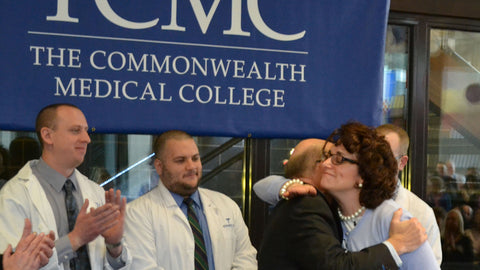By Josephine Reid
Return on investment, is there one when it comes to medical school?
The cost of medical school comes from the drive in price and that is unrelated to the cost of production is demand. If the demand for goods or services increases, so will the price. Certainly, the demand for medical education is high.
The ratio of applicants to medical school to accepted candidates is 16:1. It is not shocking that with this level of competition prices will rise. Along with demand comes supply. Limited supply also drives price. Most medical schools are allowed to admit only a limited number of students each year and so the supply is constrained.
What's the price tag?
It’s no secret that medical school is expensive. In 2013–14, the annual tuition and fees for public medical schools averaged $31,783 for in-state residents and $55,294 for non-residents. Meanwhile, the average private school tuition came in at $52,093 and $50,476 for residents and non-residents, respectively, according to Association of American Medical Colleges.
At one of the more expensive private schools, The Commonwealth Medical College in Pennsylvania, tuition and fees can reach $62,650. The cost of a medical school education begins with the starting costs (often referred to as a ‘sticker price’) to attend an institution. The starting costs fluctuate for an individual student when certain dynamics come into play, such as financial aid, scholarships, grants, the overall prestige of an institution, as well as the residency of an applicant.
For example, with yearly full-time tuition costs of $54,200, the U.S. News & World Report ranks the prestigious Harvard Medical School as the top medical school in the country for research. The top-ranked medical school for primary care is the University of Washington; where in-state students pay $31,992, and out-of-state students are charged $60,978 for full-time tuition.
Cost of Living
Where a student chooses to attend medical school (and ultimately practice as a physician) also affects the return on investment of the cost of education.
An upcoming medical student must also consider the cost of living. Each city in America can vary drastically. When you’re looking at the total cost of attendance, you have to factor in things like rent, food, whether you’ll need a car, and the cost of traveling home if you’re going out-of-state.
Surprisingly, total tuition and fees can be even higher at some public medical schools, such as the $86,000 plus that the University of South Carolina charges non-residents. Overall, these numbers are rising 3.1 to 3.4 percent annually.
Moreover, when the duration of additional required medical training is factored in, that being the three years following medical school for family practice residency or the 3 to 8 years to become a surgeon, a cardiologist, or an anesthesiologist — the total cost can be huge.
After Medical School
Going beyond the initial sticker shock, for almost three generations, debt has been a nearly unavoidable part of becoming a doctor. Over 80% of each medical student class will graduate in debt; and while that percentage has remained unchanged for 25 years, the increase in the total amount owed has leapfrogged over all other economic reality checks, like inflation and the consumer price index.
According to the Association of American Medical Colleges, which has been trying to address the problem for nearly a decade, young doctors who graduated from medical school last year had an average debt of $158,000, or $2.3 billion for the group as a whole. Almost a third of students owed more than $200,000, a number that will only increase with the addition of interest over payback periods of 25 to 30 years.
The rising costs are primarily due to the expansion and increasing complexity of universities and academic medical centers. Unfortunately, costs are only made worse as university administrators use tuition to support institutional projects that may only be indirectly linked to medical student education.
Above Average Outlook
Given these staggering costs, you may wonder if medical education can justify the financial investment? Although, ultimately the answer will depend on factors such as geography, eventual community served, choice of specialty, and other unknowns.
Even with uncertain future tax rates and tuition increases, data does show that a medical career pays for itself better than do most professions. Top medical specialists, who could expect to earn nearly $6 million (the highest lifetime earnings of any profession) over their careers. Primary-care physicians also do extremely well, ranking second in lifetime earnings, at $5.25 million.

